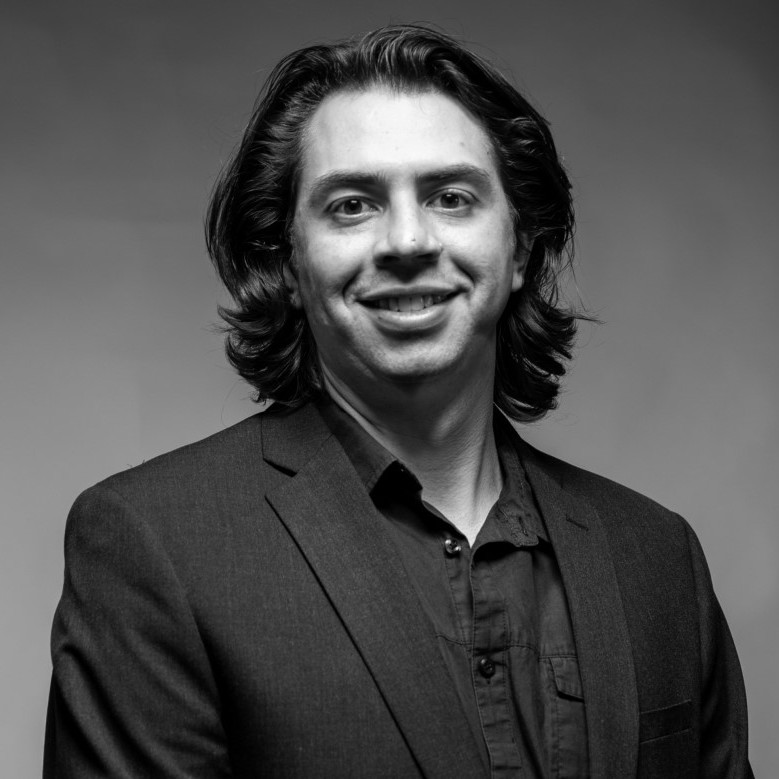Todd Green investigates comparative and functional anatomy of extinct and extant archosaurs, a group that includes avian dinosaurs (birds), non-avian dinosaurs, crocodylians, and pterosaurs. Green’s research focuses particularly on the group of birds known as paleognaths, which include tinamous, moas, elephant birds, ostriches, rheas, kiwis, emus, and cassowaries. To better interpret the biological roles of anatomical structures in the fossil record, he studies modern analogs from ontogenetic, ecological, and evolutionary perspectives.
The functional significance of bizarre ornaments, such as the cranial casques of cassowaries—rare, flightless birds from the rainforests of Australasia—are poorly understood in even modern representatives. Green’s recent work describing the development of cassowary casques uses techniques such as micro-CT imaging, geometric morphometric shape analysis, gross dissection, and fieldwork with live animals. These investigations have helped shed light upon cassowary biology, as well as the potential biological roles of their ornaments. Such insight is essential for making meaningful comparisons between modern cassowary casques and the ornaments of extinct, non-avian dinosaurs. Understanding how headgear originates and changes in evolutionary time aids in our understanding of ecomorphology and developmental patterning in deep time.
Green received a Ph.D. in Biomedical Sciences from Oklahoma State University Center for Health Sciences in 2020, a M.S. in Zoology in 2012, a B.S. in Biology and Zoology, as well as a Minor in Geology in 2008 from Colorado State University. Outside of academia he also has interests in science outreach, biological art, photography, hiking, and ice hockey.
Recent Projects and Research
- Cassowary casque development and functional anatomy; Morphological disparity in extant and extinct archosaur cranial ornaments; Avian craniovasculature and neuroanatomy
Selected Publications
- Green, T.L., & Gignac, P.M. (2021). Osteological description of casque ontogeny in the southern cassowary (Casuarius casuarius) using micro-CT imaging. The Anatomical Record. 304(3): 461–479 [doi: 10.1002/AR.24477].
- P.M. Gignac, T.L. Green, D. Oehler, J. Malatos, C. Hollinger, & J.A. Paré. (2021). Diffusible iodine-based contrast-enhanced computed tomography as a necropsy aid in veterinary medicine and wildlife biology: A case study evaluation respiratory disease in Macrocephalon maleo. Journal of Zoo and Wildlife Medicine. 52(1). In press.
- Watanabe, A., Gignac, P.M., Balanoff, A.M., Green, T.L., Kley, N.J., & Norell, M.A. (2019). Are endocasts good proxies for brain size and shape in archosaurs throughout ontogeny? Journal of Anatomy. 234: 291–305 [doi:10.1111/joa.12918].
- Garcia, T.M., Green, T.L., De Miranda Jr., M.A., Pearson, L.E., Cuevas, L.M., Larson, A.M., & Kanatous, S.B. (2014). Consideration of diet was necessary for the successful isolation and culture of Weddell seal (Leptonychotes weddellii) myoblasts. Aquatic Mammals. 40(4): 412–422 [doi:10.1578/AM.40.4.2014.412].
- De Miranda Jr., M.A., Schlater, A.E., Green, T.L., & Kanatous, S.B. (2012). In the face of hypoxia: myoglobin increases in response to hypoxic conditions and lipid supplementation in cultured Weddell seal skeletal muscle cells. Journal of Experimental Biology. 215: 806–813 [doi:10.1242/jeb.060681].
Professional Honors and Awards
- Society of Vertebrate Paleontology Jackson – School of Geosciences Travel Grant (2019)
- The Company of Biologists – Travelling Fellowship; Sponsoring Journal: Journal of Experimental Biology (2019)
- Western Interior Paleontological Society – Karl Hirsch Memorial Scholarship (2019)
- American Association of Anatomists (American Association for Anatomy) – Visiting Scholarship (2018)
- Western Interior Paleontological Society – Karl Hirsch Memorial Scholarship (2016)
- Honorary Lifetime Member of the American Emu Association (2015)
Courses Taught at New York Tech
- Foundations of Osteopathic Medicine: Human Gross Anatomy
